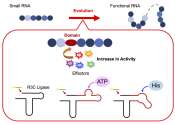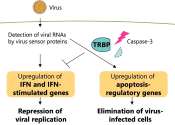A new method for enzymatic synthesis of potential RNA therapeutics
A team of researchers at IOCB Prague led by Prof. Michal Hocek has developed a novel method for preparing ribonucleic acid (RNA) containing modified bases. Innovative use of engineered DNA polymerases, enzymes commonly used ...









